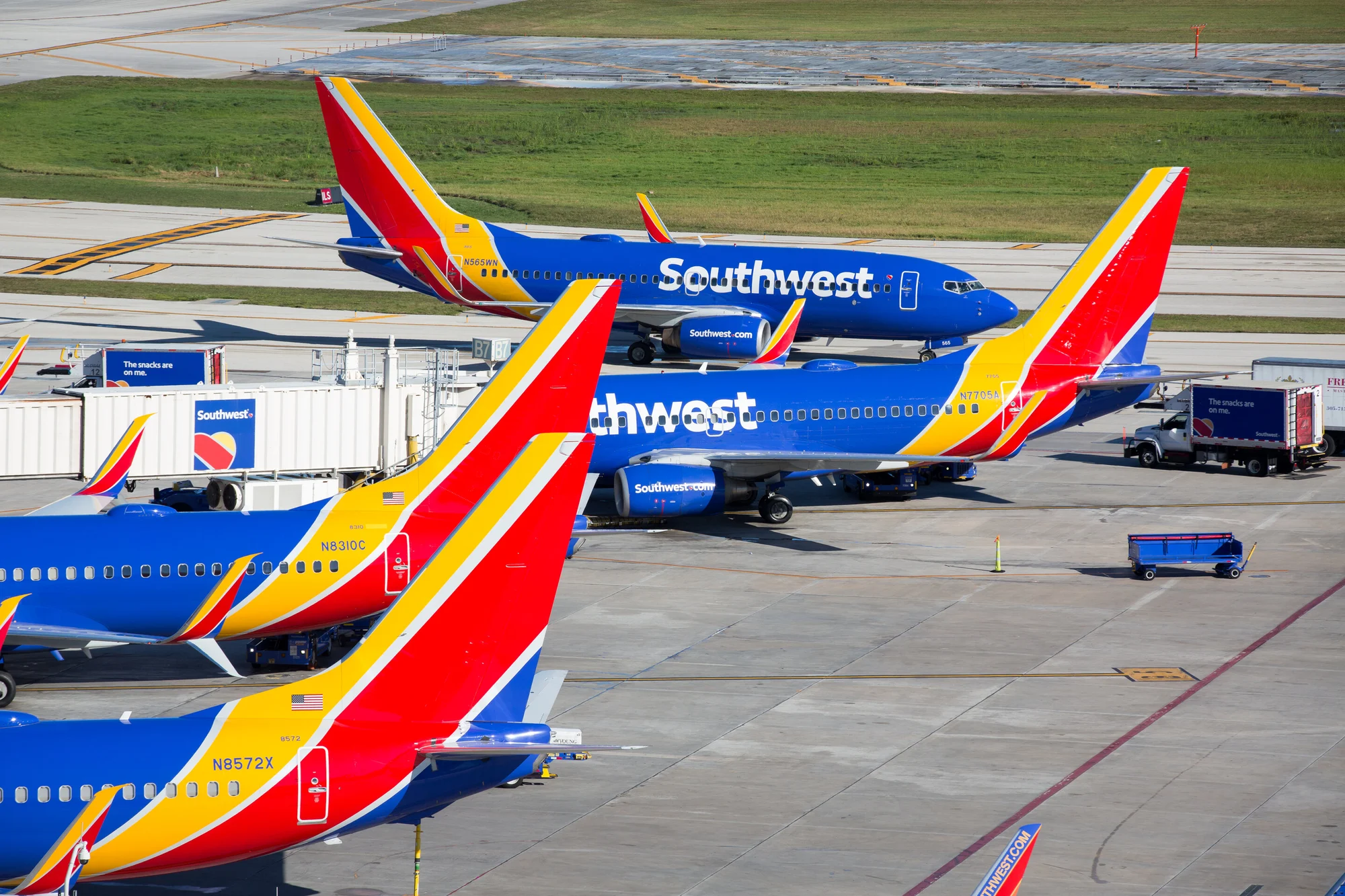The longtime industry leader is struggling mightily as demand moderates and costs remain too high.
Earlier this month, shares of Southwest Airlines (LUV 2.06%) were nearing a 52-week high, as investors grew more confident about the airline industry’s post-pandemic recovery.
That optimism has disappeared almost overnight. Southwest Airlines stock has fallen 16% since topping out on July 11, punctuated by a 9% drop after its earnings report on Thursday. While the airline giant continues to have a strong balance sheet, its once-vaunted business model is in shambles. That makes Southwest Airlines stock a bad bet compared to better-managed and more profitable peers.
Demand is starting to sag
Southwest Airlines reported subpar second-quarter results this week (though they met Wall Street’s low expectations). Unit revenue fell 8.3% from last year’s elevated level, more than offsetting the tailwind from lower fuel prices.
Management expects unit revenue to continue retreating from 2022 peak levels. For the third quarter, it estimates that unit revenue will decrease 3% to 7% on capacity growth of around 12%.
The Q3 unit revenue guidance is actually more disappointing than the Q2 result, because the airline is facing a much easier comparison this quarter. Despite the big year-over-year drop, Southwest’s unit revenue was still up nearly 12% compared to 2019 last quarter. By contrast, the midpoint of management’s Q3 guidance implies unit revenue just 5% ahead of 2019 levels.
Costs are a big problem, too
Generating unit revenue even 5% ahead of pre-pandemic levels might seem pretty good at first glance, but airlines face a radically different cost environment than they did in 2019. Labor costs have increased significantly, and while fuel prices have moderated compared to 2022, they remain well above 2019 levels.
Southwest is struggling to contain costs even more than many of its rivals, primarily because it didn’t take any dramatic cost-cutting actions during the pandemic. Excluding special items, the carrier reported that unit costs were up 18.4% compared to Q2 2019 last quarter. Southwest’s guidance for the third quarter implies a similar increase.
With unit revenue growth failing to keep pace with rising costs, Southwest Airlines’ profitability is coming under pressure. Adjusted earnings per share (EPS) fell to $1.09 last quarter from $1.30 a year earlier. Operating profit — a metric that excludes the benefit of higher interest income on the company’s sizable cash balance — plunged 31% to $807 million.

SOUTHWEST AIRLINES OPERATING MARGIN (TTM), DATA BY YCHARTS. TTM = TRAILING 12 MONTHS.
As noted above, Southwest Airlines faces a much easier year-over-year comparison this quarter than it did in Q2. As a result, adjusted EPS could still grow compared to the $0.50 recorded in Q3 2022. But adjusted EPS will probably remain at least 50% below the company’s Q3 2019 result of $1.23.
Where’s the urgency?
In response to the company’s continued underperformance, Southwest Airlines plans to adjust its flight schedule next year. The airline will trim capacity on off-peak days like Tuesday and Wednesday and at off-peak times (early mornings and late in the evening). Those flights rely heavily on business travel to make money, and business demand remains well below pre-pandemic levels. Southwest will also shift some capacity from business-oriented short-haul routes to leisure markets.
These moves will support unit revenue, boosting profitability. Nevertheless, the schedule and network changes aren’t a panacea for the company’s problems.
To return to anything resembling its historical level of profitability, Southwest Airlines needs a bold plan to reduce costs. So far, management has stuck to incremental moves. Considering how competitive the airline industry is, that isn’t likely to be good enough.
If Southwest Airlines ever finds its way, the share price could rocket higher, particularly if the company deploys some of its excess cash to buy back stock. After all, Southwest’s enterprise value sits more than 50% below the peak reached in late 2017. But until performance turns around — or management launches a bolder plan to fix the company — investors should probably stay away.

